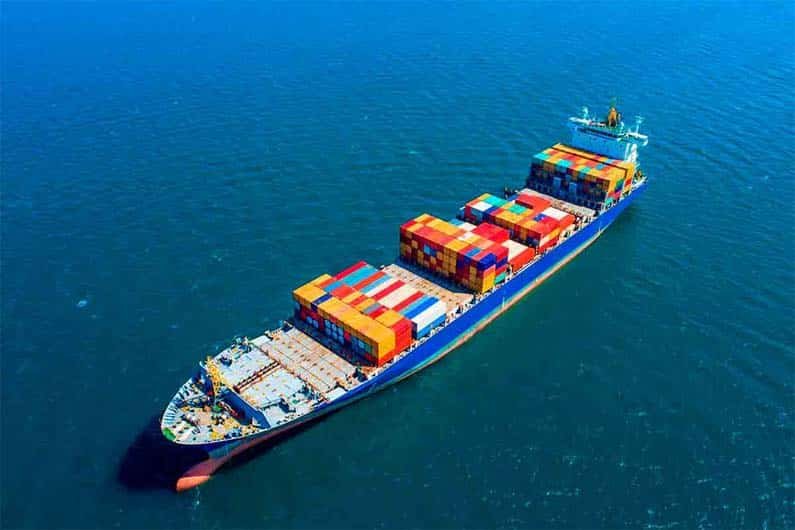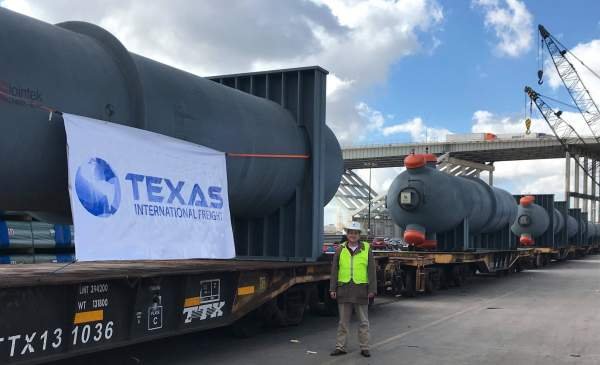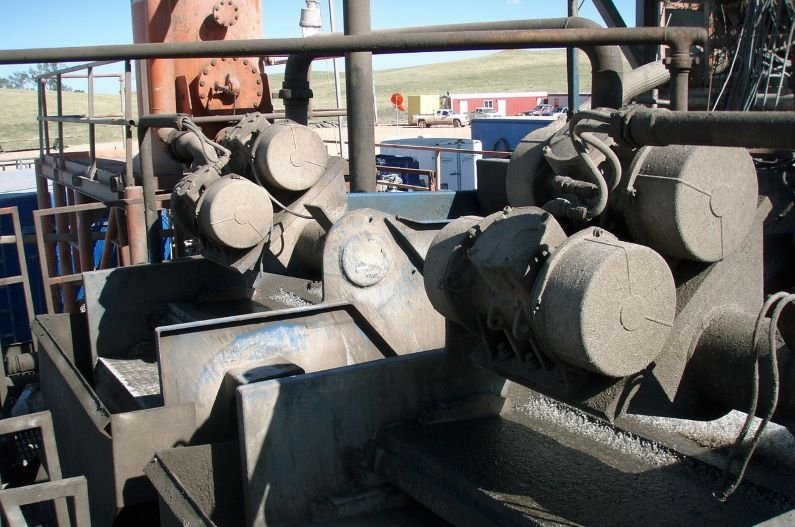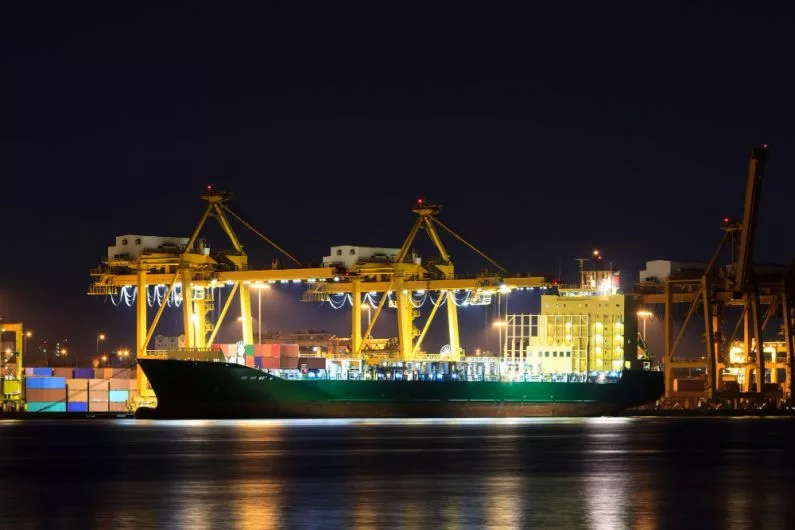What Is Meant by Logistics?
The term “logistics” describes the total process of controlling the acquisition, storage, and delivery of resources to their intended location. Choosing potential distributors and suppliers and evaluating their efficiency and accessibility are all part of logistics management. The term “logisticians” is used to describe logistics managers.
The term “logistics” was originally coined by the military to describe the methods used by military personnel to acquire, store, and transport equipment and supplies.
The phrase is ubiquitous in the corporate world, especially by organizations in the industrial sectors, to describe the management and movement of resources along the supply chain.
Logistics, in general, refers to the careful preparation and performance of putting the right product at the right place at the right time. To serve the needs of customers or enterprises, logistics is broadly defined as the management of the flow of commodities from their point of origin to their site of consumption.
Resources in logistics can be managed as both real assets like materials, equipment, and supplies as well as consumables like food and other consumables.
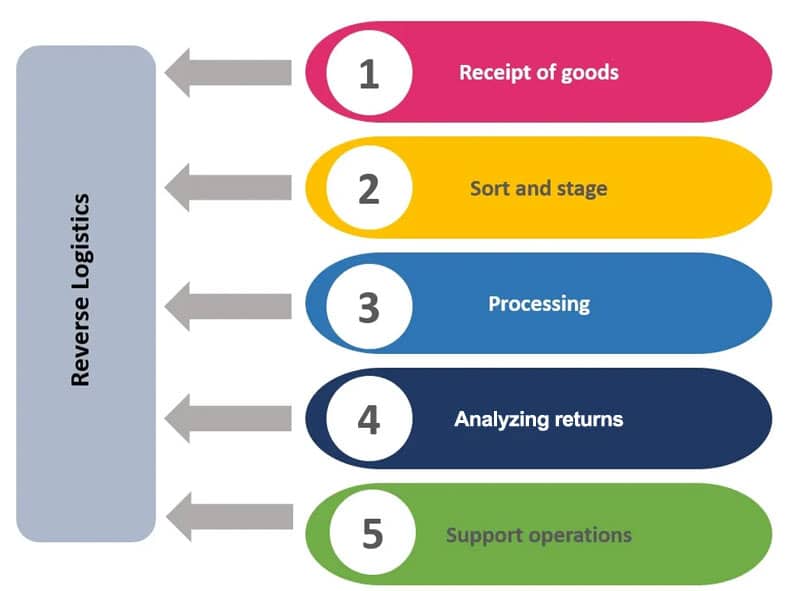
What Is Meant by “Reverse Logistics”?
Reverse logistics is a form of supply chain management that involves transferring commodities from buyers to sellers or producers. Processes like returns or recycling require reverse logistics after a customer receives a product.
Reverse logistics starts at the customer and moves backward through the supply chain to the manufacturer or from the manufacturer to the distributor. Reverse logistics can also refer to procedures where the eventual disposition of the goods, such as recycling, refurbishing, or resale, is the responsibility of the end user.

Use of Reverse Logistics
Reverse logistics is used by businesses when products are returned from their destination back through the supply chain to the seller and maybe back to the suppliers. Regaining value from the product or getting rid of it are the objectives. Returns have increased in frequency with the development of ecommerce and are worth roughly a trillion dollars globally each year.
Recovering value and obtaining repeat business are the goals of reverse logistics. Compared to at least 30% of things ordered online, less than 10% of in-store sales are returned. Smart businesses employ reverse logistics to increase customer loyalty, encourage repeat business, and cut down on return-related losses.
What Are the 5R’s of Reverse Logistics?
In reverse logistics, there are five R’s: returns, reselling, repairs, repackaging, and recycling. Businesses use metrics for each of these alternatives to measure progress and performance. To streamline its reverse logistics procedures and lower losses there, your company might wish to take a closer look at the five R’s.

An Example of Reverse Logistics
Reverse logistics aims to control logistics by dealing with goods from their place of consumption to their source of origin. Its strategic goal is to increase the value of returned items. With an example from the oil and gas industry, reverse logistics may be clearly explained. Several factors that affect the effectiveness of the reverse management process are identified in the process. Reverse logistics here operates in a relatively straightforward manner, using the typical example of gas filling stations. The container is returned to the dealer or manufacturer for refilling when the gas inside has been used. The ultimate illustration of reverse logistics is the flow of goods from the consumer to the manufacturer.
Reverse Logistics Strategies
5 strategies to optimize Reverse logistics:
- Evaluate policies and agreements related to the company’s return and repairs beforehand to make the work smooth.
- Collect feedbacks for the products returned and use this data to rectify the errors. This will also enhance customer satisfaction.
- Businesses are better able to decide how to recover product value when there is a center. If your business doesn’t have the funds to operate a separate returns center, you might want to think about setting aside some space in your warehouse or factory for returns.
- To simplify processes, use cloud-based logistics software. Software systems can manage refurbishment, track asset recovery, and offer business intelligence analyses, for instance.
- Review the logistics and transportation procedures both forward and backward on a regular basis. Check to see if it is possible to combine some of these operations with transit. For instance, you can save trips, time, and money if your delivery trucks can pick up empty pallets as they drop off full pallets.
Reverse Logistics Challenges
The requirement for a bi-directional flow presents a challenge for reverse logistics. For it to be effective, managers must set up the appropriate infrastructure. This frequently calls for software that can automate and monitor each step of reverse logistics. Once that infrastructure is set up, management must continue to keep an eye on and assess the effectiveness of the organization’s reverse logistics procedures.
To get the full picture, businesses must track both inbound and outbound logistics. The management of goods or raw materials being delivered from the supplier to the manufacturer is known as inbound logistics. Outbound logistics refers to the procedures used to deliver finished goods to the final consumer. Reverse logistics can be a part of any point in the supply chain, while inbound and outbound logistics are both measured from the manufacturer’s perspective.
Reverse Logistic Business in USA
Many businesses have unrealized potential in the reverse logistics process. Returns, exchanges, and the potential for remanufacturing can be disregarded because they are commonly seen as cost rather than income drivers.
For the same reason, many companies have evolved to compete in this market.
Texas International Freight provides businesses navigating the mysterious world of shipping with complete logistics solutions. Our clients have been spared hundreds of thousands of dollars because of our specialist knowledge and proficiency in handling intricate logistics.
We accomplish this by:
- Exceeding challenging deadlines
- Offering choices for cargo shipping that are affordable
- Putting customers on the correct path to clearing US Customs with our in-house, individually licensed customs broker
In conclusion, Texas International Freight always aspires to offer the best solutions to satisfy the various yet unique needs of our clients.
Reverse Logistic Technologies
Systems for supply chains already use artificial intelligence. The development of artificial intelligence as a reverse logistics technology, however, gives yet another chance for advancement in the current reverse supply chain.
To sift through the zillions of returns or repair requests and find potential problems with products, artificial intelligence can be employed. This might be used in a variety of supply chains, including those for food, electronics, personal hygiene products, and much more as e-commerce develops.
Artificial intelligence has too many applications to be ignored, especially when used in reverse logistics‘. At the recycling and reclamation stage, it can open up new avenues for increasing supply chain profitability.
To Conclude
Minimizing disruptions from returns is the main focus of reverse logistics in the future. Returns are happening more frequently, particularly in e-commerce and in the retail sector. The entire return process can be integrated by businesses using reverse logistics.
Connecting product data to staff handling requirements is one way to integrate returns. The supply chain can facilitate this integration by recording what happens to returned goods, including whether they are used for repairs, resale, or recycling as raw materials. Integrated supply chain management software, which aids in these decisions and may also produce useful data, is what reverse logistics will look like in the future.

